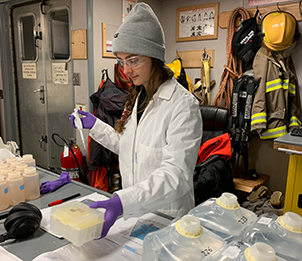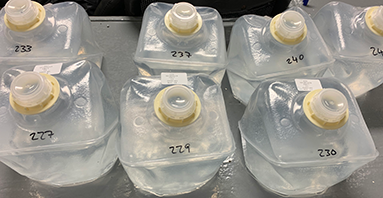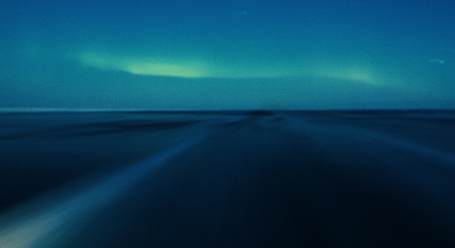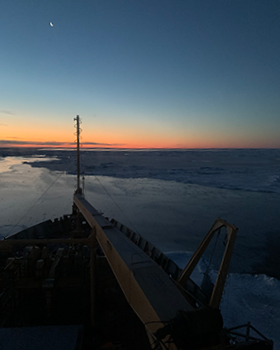Dispatch 7: Water Mass Tracers: Hafnium and Neodymium
Ashley Arroyo
September 22, 2022
How do we know the origins of water masses in the Arctic Ocean? Well, there are several ways to find out. For example, water masses typically have a specific temperature and salinity signal based on their origins. Another way to determine the origin of a particular water mass is to look at its trace elements and isotope compositions. As a part of our expedition, Annabel Payne, a PhD student at ETH Zürich, is collecting water samples to measure two isotopes (Hafnium and Neodymium) to help understand the origin of surface waters in the Canada Basin. The primary source of Hafnium and Neodymium in the ocean is through input from continental rock weathering. The isotopic compositions of continental rocks in the region widely varies, in turn, waters with different sources in the Canada Basin (i.e., the Pacific/Atlantic Oceans and Arctic rivers) tend to have different isotopic signatures of Hafnium and Neodymium, allowing us to use these isotope measurements as a tool to understand the origin of Arctic Ocean water masses.
Annabel is specifically looking to understand the composition of near-surface waters in the Canada Basin. The polar mixed layer, which is the uppermost layer in the Arctic water column and can be between about 2 m and 30 m thick, is made relatively fresh by sea ice meltwater, river discharge and precipitation. Directly beneath the surface mixed layer, a layer of Pacific origin water resides between depths of about 30 and 100 m, which is known as the Pacific Summer Water layer. The Pacific Ocean is surrounded by young volcanic rocks, which give Pacific sourced water a more positive isotope signature. In contrast, the Mackenzie River, which drains the northern most portion of Canada and carries material from much older rocks, gives the river a distinctive negative isotopic signature.
To make her measurements, Annabel is collecting 20-liter water samples from Niskin bottles at 10 separate stations, where she is taking water from the surface, and from the core of the Pacific Summer Water layer. This way, the isotopic signatures between the two samples can be compared, and the origins and level of mixing between water masses can be inferred. Once collected, the samples are filtered to remove any particulate matter that could influence the isotopic composition. After the water samples are filtered, nitric acid is added, which ensures that the elements are preserved correctly (and essentially don’t stick to the edges of the container) so the measured isotopic ratios are accurate. When the expedition is complete (in mid-October), the samples will be shipped back to ETH Zürich where they will be processed in a clean lab.
In other news, we are chugging along! Early this morning, the skies were the clearest they have been since we began our expedition. A few of us on the night watch were even able to get a glimpse of the Northern Lights around 4:30am! In addition, we watched a beautiful sunrise from the Bridge, which is where the Captain and the mates steer the ship (which has a spectacular view).



